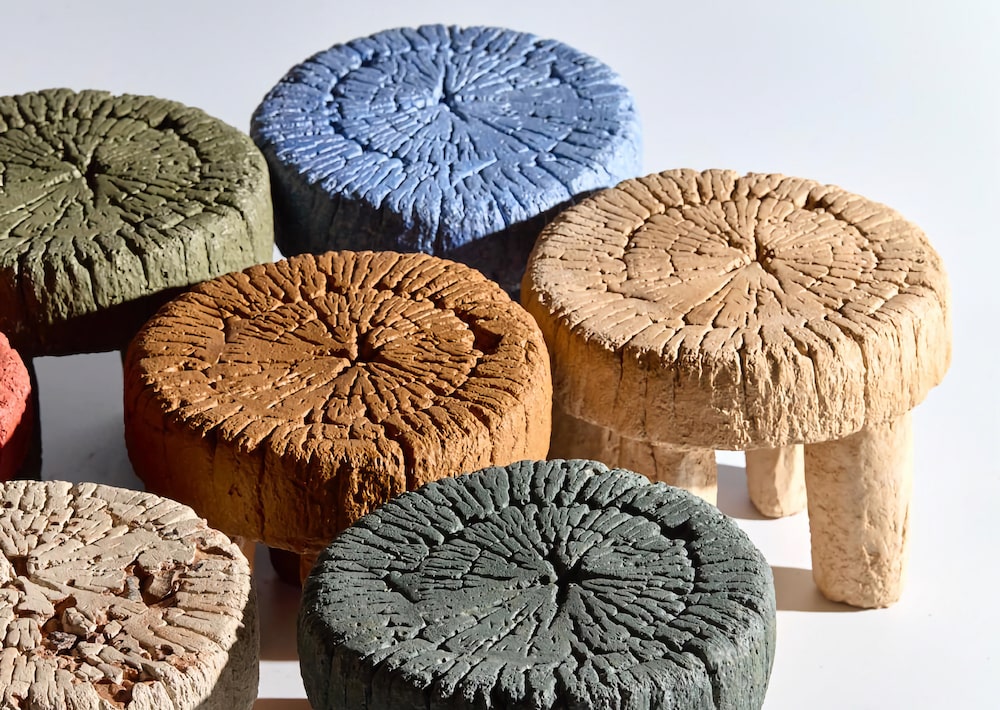Makiko Minagawa has been a leader in textile design and development for decades. She’s been the director of textiles at Miyake Design Studio since the 1970s, and in 1999 she founded HaaT, a collection within Issey Miyake that focuses on handmade materials and traditional fabric techniques. “HaaT” means “village market” in Sanskrit, and stands for “heart” and “hand.” A trip to India a few years prior to launching the collection inspired the designer to explore traditional textile techniques, which she continues to mix with modern technologies. Makiko is devoted to finding and preserving time-honored Japanese craftsmanship with each season—such as her use of tea dye and temper color printing (now only still done in one Kyoto workshop) appears in the Spring/Summer 2015 collection.
The designer was in New York late last year to celebrate the 15th anniversary of HaaT, and we met with her to discuss the warmth in the handmade, creating hidden luxuries in each item (like floral embroidery hand-sewn in the interior of a boot), and finding new ways to create and preserve fabric-making—sometimes even by accident.
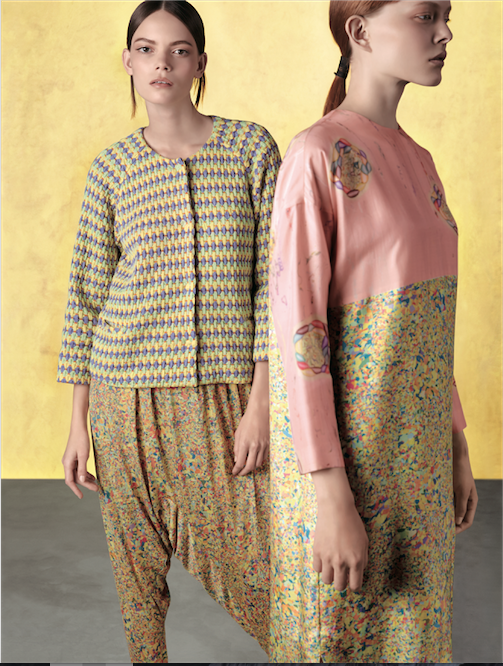
Courtesy of Issey Miyake.
WHITEWALL: What about your time traveling to India inspired HaaT?
MAKIKO MINAGAWA: My first trip was in 1984. It wasn’t the scenery that I was attracted to; it was more of the lifestyle of it, the craftsmanship of it. I felt like everything of the origin of textile was there. I was very inspired by India.
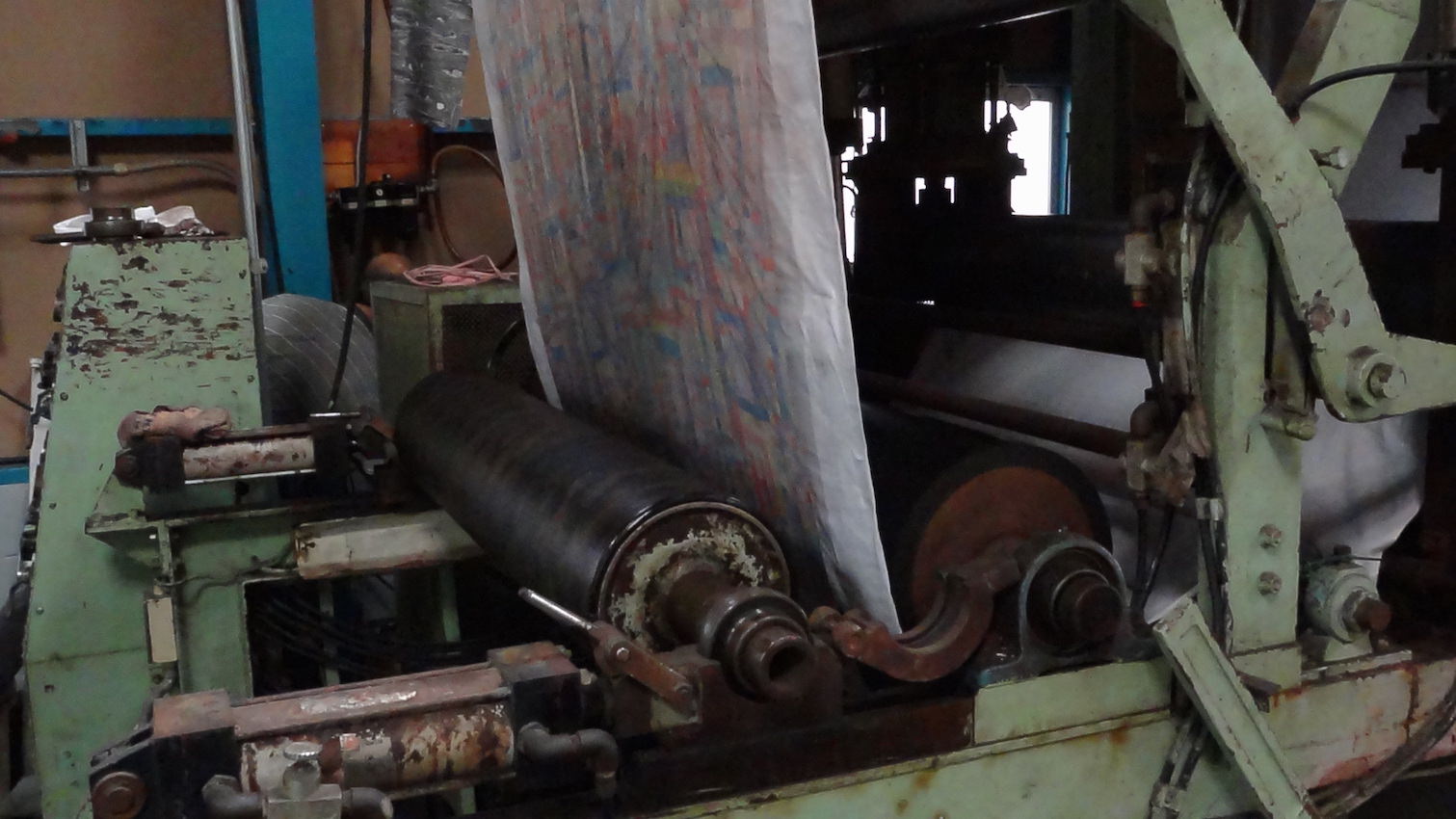
Courtesy of Issey Miyake.
WW: We understand that when you were there, you found that the traditional techniques were preserved by the Indian government, whereas in Japan at the time it was more about mass production and industrial techniques.
MM: It’s getting harder and harder to make things, to produce things in Japan. It’s difficult to find a partner that is willing to do intricate work. So what we do is mix mass and the traditional. This is an inkjet production, but we added the fringe from the traditional technique. It’s always a struggle to mix things together to produce something. I use a lot of mechanic innovation to look like it is handmade and handcrafted, and that is the challenge.
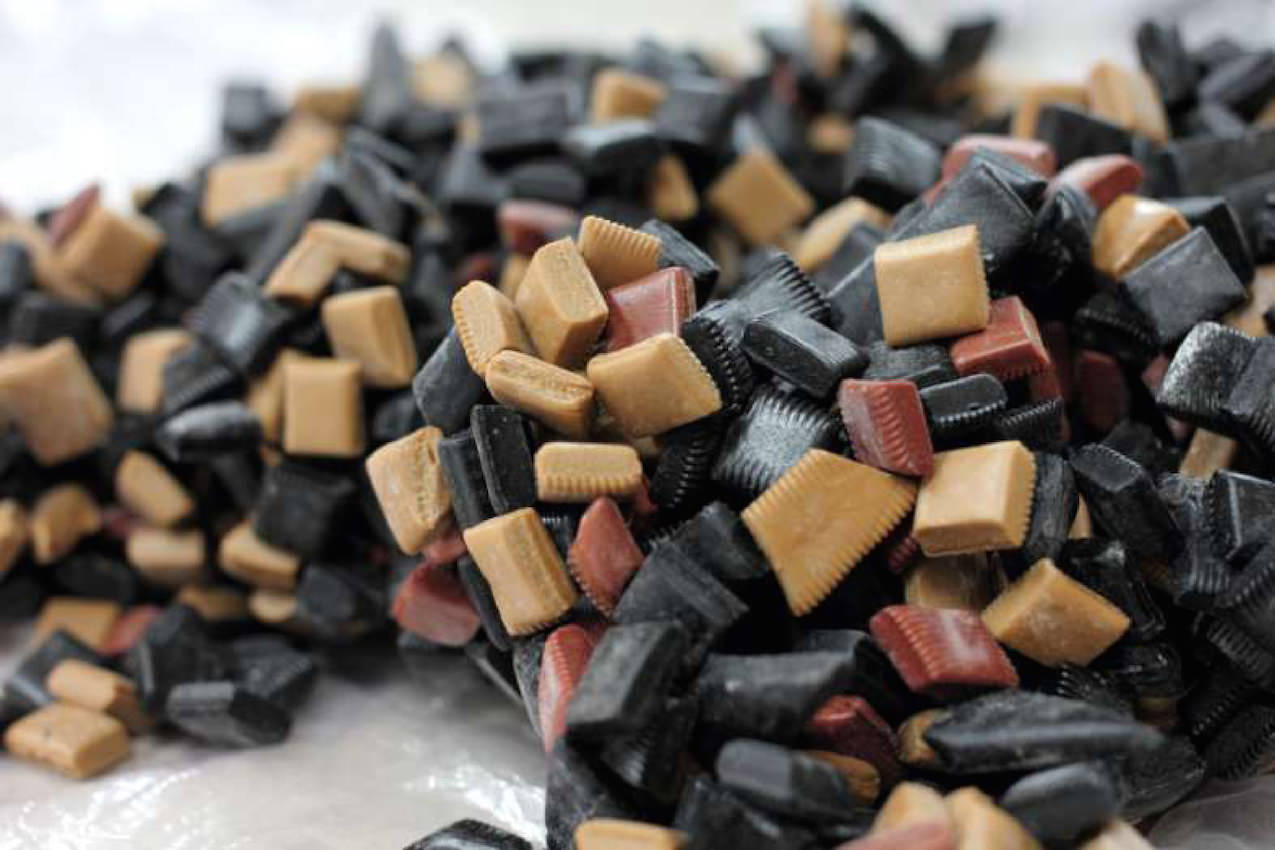
Courtesy of Issey Miyake.
WW: Why is it important in textiles to show the hand in it?
MM: People tend to like the warmth of hands; people are attracted to it, and I would like to show that in fabrics. I’ve always been interested in fabric. I liked the spirit they have over in India to make things, the way people think. It is one of the rare countries that does everything by hand, even weaving, so I go there to be inspired by that.
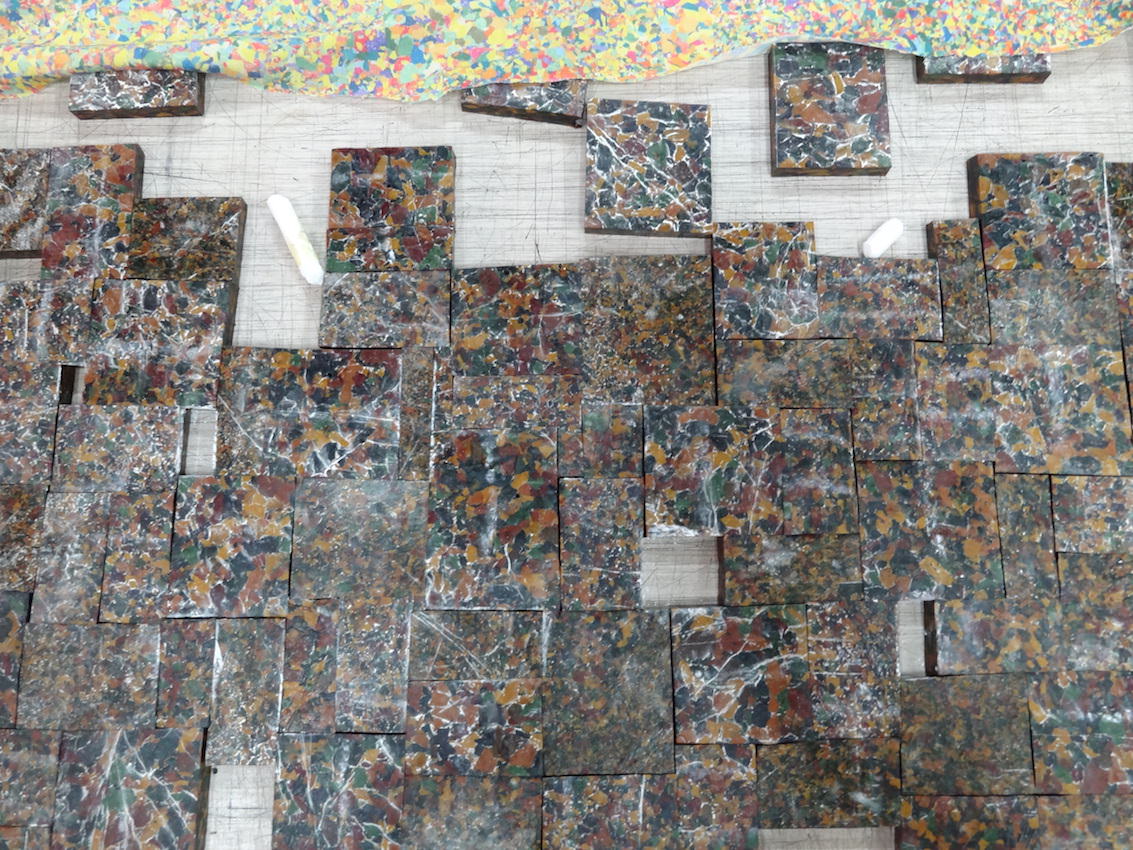
Courtesy of Issey Miyake.
WW: Looking back on 15 years of HaaT, have you seen any major textile discoveries?
MM: I’m always hopeful there is a little discovery. For instance, our black fabric is an example of a more saturated black. This was one of my discoveries. This was rather an accident, but it was a discovery. In Japan this black is used for formalwear, weddings, or funerals. One of our artisans shared the story with me that his grandfather accidentally spilled an egg white on his traditional kimono, and that stain had gotten darker and darker as time went on. It was some sort of chemical reaction; the protein in the egg white made the black darker. So we translated that into a chemical process in order to make this dark-on-dark black color, which we are particularly fond of—it’s a signature for us. It really stands out. It’s the perfect black.
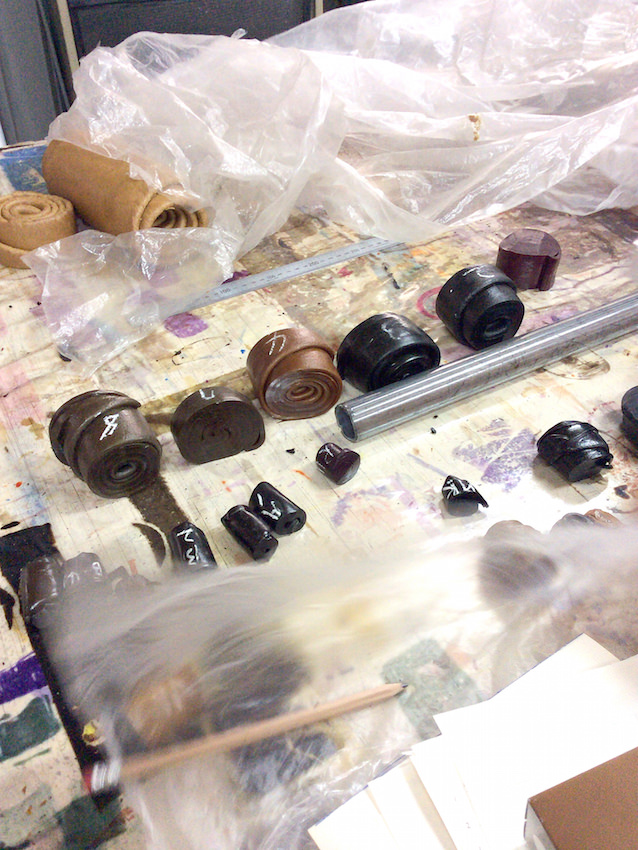
Courtesy of Issey Miyake.
WW: Part of what you do at HaaT with textile development must be finding traditional craftspeople.
MM: I’m trying to find them. I also feel like it’s my duty to maintain those craftspeople by giving them the work.
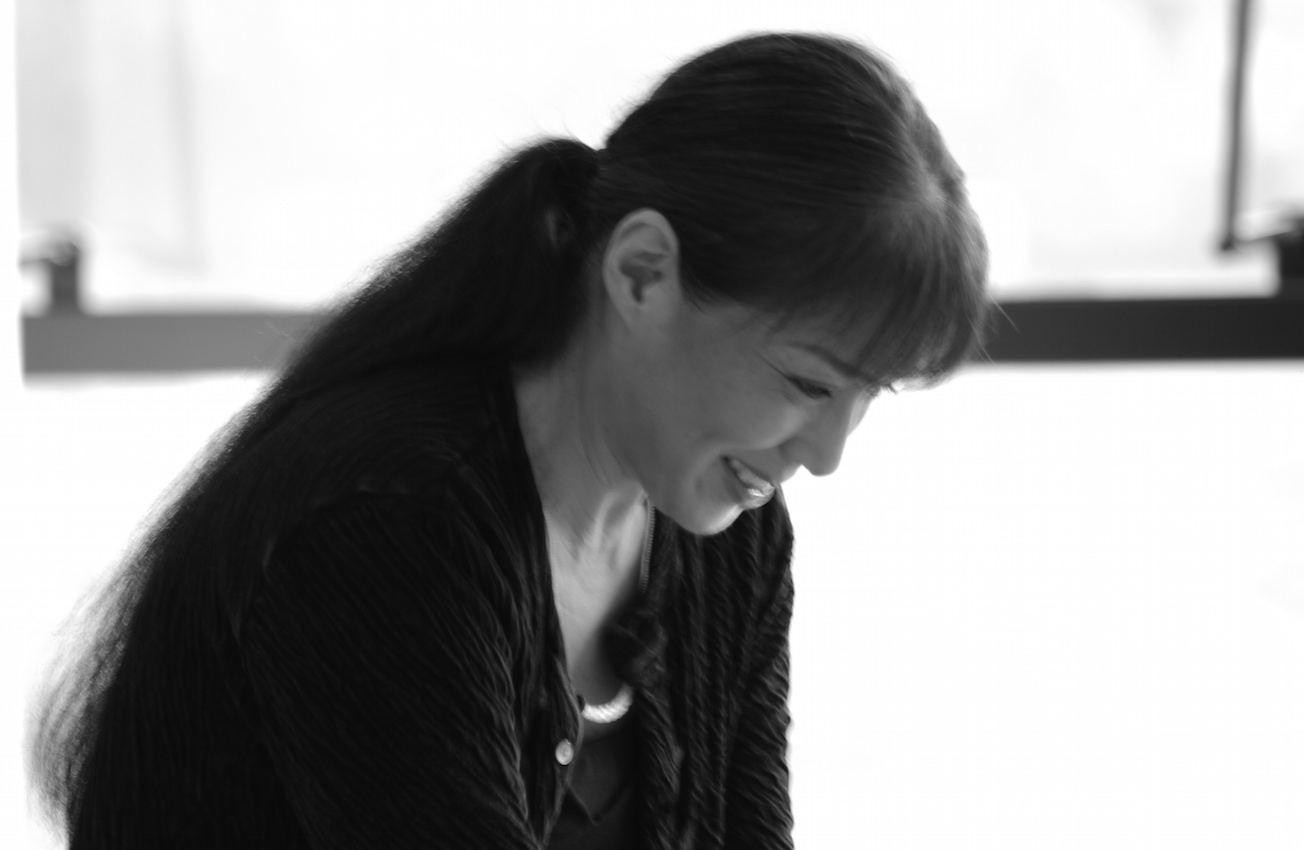
Courtesy of Issey Miyake.
WW: Like the temper color printing in the Spring/Summer 2015 collection done by a workshop in Kyoto. How does it compare to digital printing?
MM: To be completely honest with you, there is no difference, but there is a cost difference. We want to keep giving them work so that they survive. That is the only reason I use them. Inkjet will come out a little lighter on the back; their technique saturates the fabric a little more. Other than that, it looks very similar. It is such a luxury step, but that makes it a little different.
WW: For the garments, which comes first, the textile or the design and shape?
MM: First is the textile for me. Then it’s a collaboration of work with the designer, what it will be as a final product. Mostly simple design is what I go for.
WW: What is the process of experimentation in the studio, all the way to a fabric that goes into production?
MM: There are very strict standards that we need to pass, so until we hit those, we keep trying. We also put the garment through 50 hours of wearing to see how it fits and how it functions.
WW: Why have you always been interested in working with fabrics, do you think?
MM: Since I was little, I always liked to experiment with dyeing yarn, dyeing T-shirts, and that just became my job. Last month I did an exhibition in Tokyo for HaaT’s 15th anniversary. Normally you don’t reveal the secrets in textiles, but I talked about the yarn, talked about the construction; I revealed everything. Everyone saw it, from students to housewives. I presented about a dozen unique methods in many more fabrics.
It is something I think about all the time. The future is to maintain what we still have in Japan and keep teaching them what they can do. That’s why I really liked the fact that the housewives and students all came to this exhibition. I did not exhibit any Indian goods. I wanted to tell them how important it is for them to keep these Japanese techniques going. I feel like that is the future.
This article is in Whitewall’s summer 2015 Design Issue out now.






